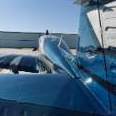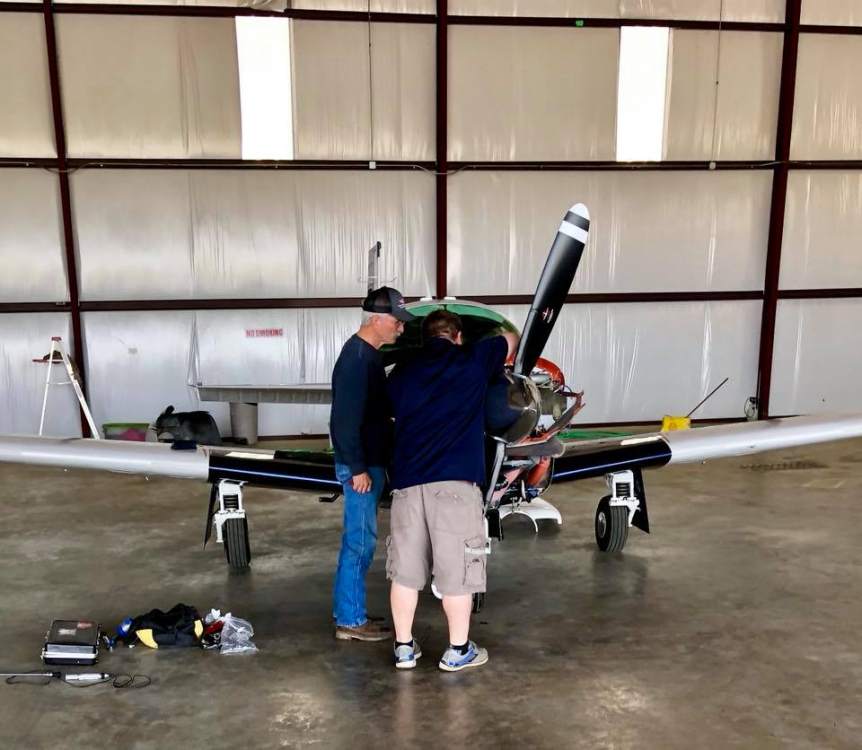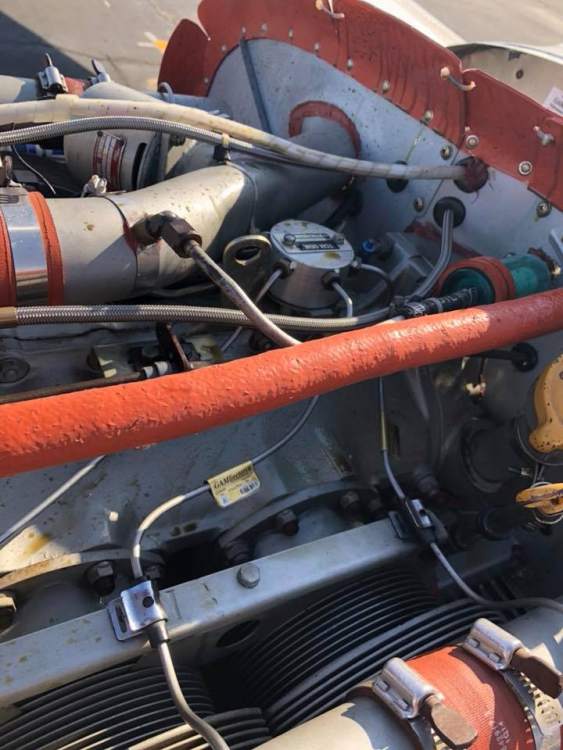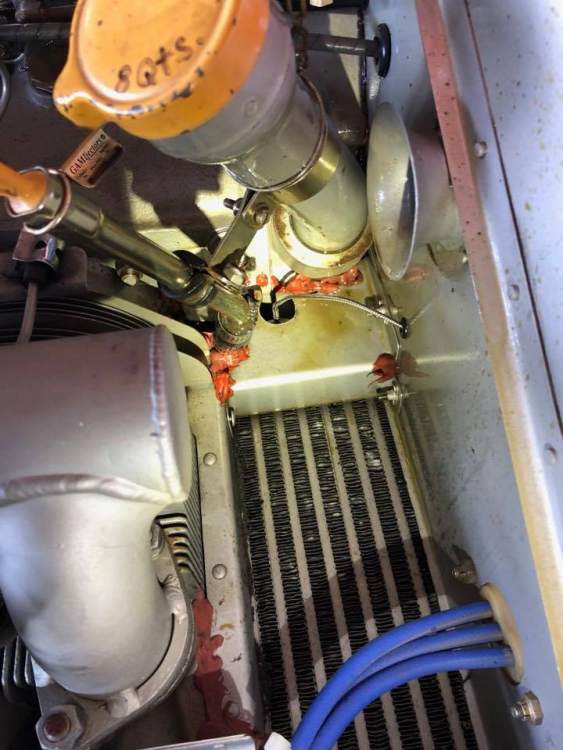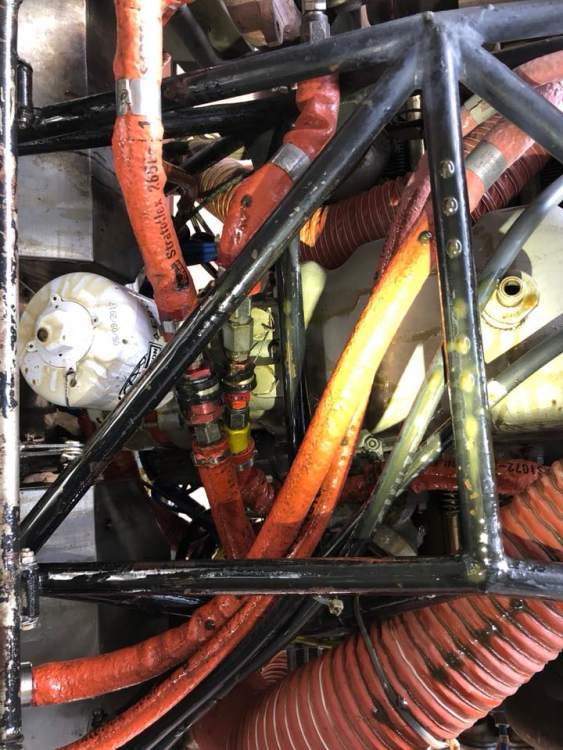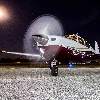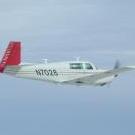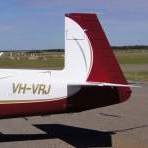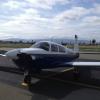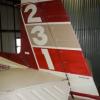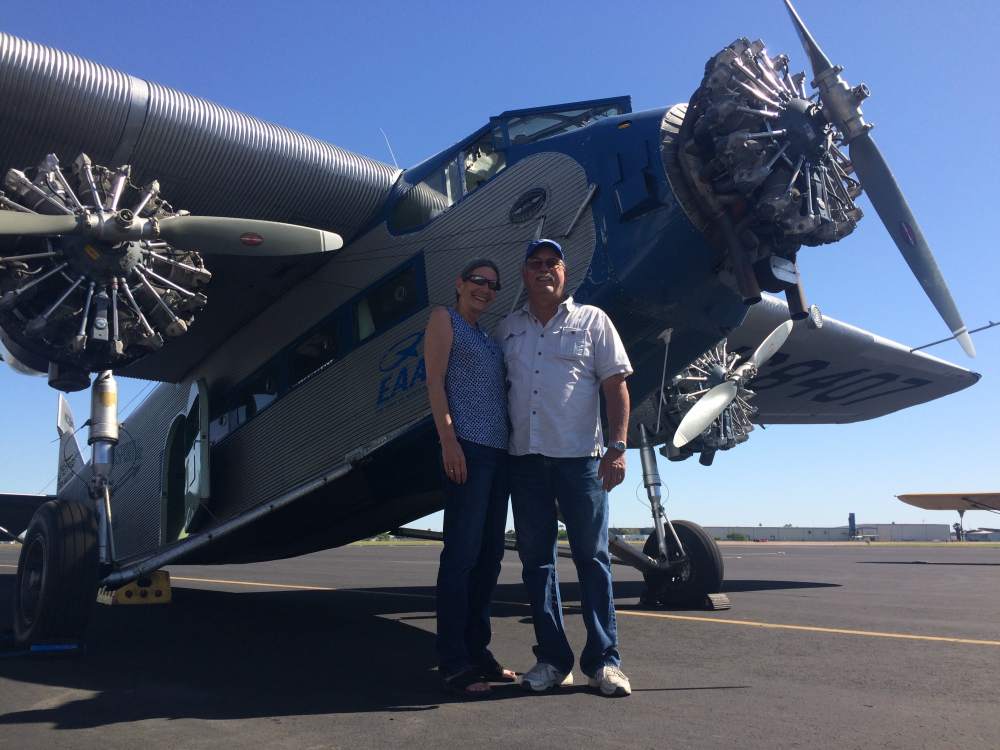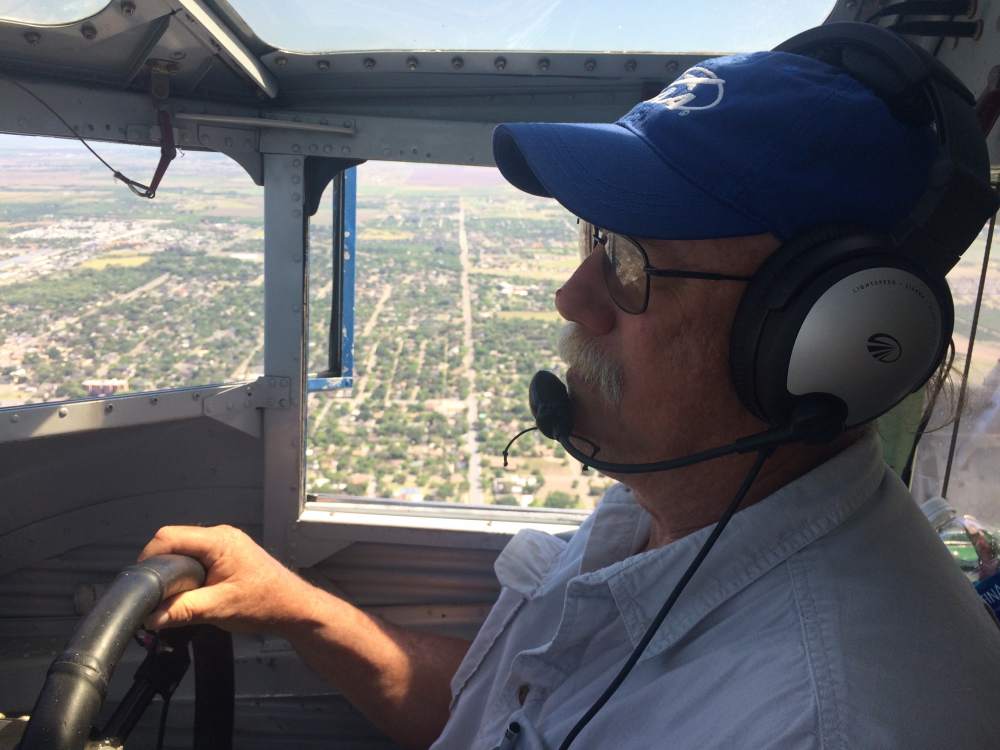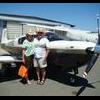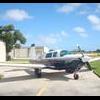Leaderboard
Popular Content
Showing content with the highest reputation on 04/21/2018 in all areas
-
I flew the highest time 747-200 that ever existed, or maybe ever will exist, about 2 weeks before it went to the scrap yard. N748SA, (ex PH-BUH) had about 135-137,000 hours and ~26k cycles..... All the way across Africa and a couple thunderstorms. My buddy Mark was the FE on the last flight, to the boneyard at Mojave. Over AZ, the old girl wasn't done yet, they took her up to FL450 (wrong way) and set off the clacker at .92 Mach.Still had some thrust left over. It still made book speed and fuel flow...Then the long, slow, decent down to Mojave, and floated the landing, she wasnt done yet, , for one final stop. http://opennav.com/forum/airchive/5200853 http://www.airliners.net/forum/viewtopic.php?t=13484294 points
-
Alright so I tackled the door seal this week. I am at my work location and secondary hangar so no electric tools. After removal of the interior panels it looked like there were 3 layers of old glue in places. It had been patched with more glue near the bottom by the guide rail attachment point and was especially thick there. Since there were no electric tools I used scrapers, both metal and plastic. I softened it with Goo Gone, but you have to keep it wet or the glue hardens again. A drill with some sort of nilon or plastic bristles would have made it much easier. Red Scotch Brite pads helped. Anyway, after two evenings of glue removal I got it down to shiny aluminum. After wiping down with rubbing alcohol I went with the M-D Weatherstrip from the Aviation Isle at Lowes and am very happy with the results.4 points
-
I'm sure it's a great product, and EI customer support always gets high reviews. Actually much better than JPI support. But having said that it just doesn't seem to me to be a good buy. Engine monitors can either replace your factory EGT and CHT gauges or can replace ALL engine gauges. The CGR-30 units do neither economically ($$$ or panel space). If you're just looking for a replacement for EGT/CHT, then the CGR-30 is too expensive and the GEM G2 is a much better buy for the same functionality. If you're looking to replace all engine gauges then you'd need two CGR-30 units and two 3 inch holes. And in that case the JPI EDM-900 will do the same in less panel space and for less $$$.3 points
-
3 points
-
I have redundant MP, RPM and fuel pressure/flow. The only one that was a challenge was the fuel pressure. My mechanic installed a T to be able to use both the EI fuel totalizer and the JPI 900. This leaves the only primary gauges dependent on the JPI to be the oil temp, oil pressure, fuel gauges, the one CHT and ammeter. Sent from my iPhone using Tapatalk Pro3 points
-
While taking off from 4O4 (Idabel, OK) at around 11:30pm Thursday night I experienced a loss of power and the engine began to run very rough (felt like I was sitting on an unbalanced washing machine). I turned and retuned to the airport to find oil pouring out of the bottom of the cowling. I noticed before I landed that I had lost temps in my #3 cylinder and #1 was looking suspicious as well. After a phone call Friday morning to Don Maxwell (who I purchased the plane from in Oct. of 2016) he sent his son Paul and one of his mechanics Tom to diagnose the problem. They arrived from Longview at 1pm and by 5:30pm the diagnosis had been made and the parts removed to be sent out for repair. The #1 and #3 cylinders were not producing any power. The blow by pressurized the case and was blowing oil out of the filler tube and the oil vent tube (lost over a quart going around the patch). A great big thank you to Don, Paul and Tom for coming to help me so quickly. Hope to have my bird back in the air soon.2 points
-
Glad you got it down before you lost more than a couple cylinders. This is one thing I much appreciate on the 6 cyl engine versus the 4. Besides more HP, loosing a cylinder is barely noticeable compared to loosing one of only 4.2 points
-
Different motor but I’ve seen the same thing. I have 2 senders, one for ships gauge and a second for the JPI 830. Ships gauge was dancing from near zero to normal whereas JPI was rock solid at 51 PSI. I was near home and decided to believe my much newer JPI installation. Turned out that sender for ships gauge was faulty. Swapped it out and it has been fine ever since.2 points
-
Sounds like an electrical connection issue...I'd start with the grounding jumper behind the panel for the cluster gauge. You might pop the glareshield off, remove the wire terminal, scotch brite the terminal and the panel and then reassemble. Sent from my LG-US996 using Tapatalk2 points
-
We have a '76F model too, presumably wired the same way as yours. I have the electrical schematics for it, PM me if you're interested in a copy. Assuming our airplanes are wired the same way, the switch you found in the wheel well is the "squat switch" that prevents the gear from being raised when there is weight on the wheels. It's normal for there to be a small gap between the switch and the plate when the airplane is on the ground - that's how it works. When you take off and the gear doughnuts expand, the plate moves to close the switch. The switch is actually a double-pole switch which routes power to one of two different sources when the gear selector is in the up position. If the squat switch is "closed", power is routed to the gear motor to raise the landing gear. If it's "open", power is routed to the gear warning horn instead. This is something I think a lot of people don't know - that there are actually two logical events that cause the gear horn to sound. Reducing throttle below the switch point with the landing gear up is only one of them. The other is attempting to raise the landing gear with weight on the wheels. Anyway, the squat switch has absolutely nothing to do with the green "Gear Down" and red "Gear Unsafe" lights on your panel. Those lights are controlled only by the limit switches in the belly. Those limit switches are also DPDT switches, meaning they have two independent switch circuits in a single housing, actuated by a single "button". Since you're able to get the "Gear Down" light to illuminate with the push-to-test switch, the problem has to be the down-limit switch in the belly. The external switch "button" and the internal half of the switch which controls the gear motor itself must be working - otherwise the gear motor would not have stopped running when you selected gear down, and the gear motor breaker would have tripped. So it's highly likely the half of the switch that controls the gear down light is the problem: either the internal guts of the switch have failed, or (hopefully) the wire connections to it have simply come loose. As owner/operator, you're absolutely allowed to remove the belly panel that allows you to look at the limit switches. If you find one of the wire terminal connections associated with that switch to be loose or disconnected, you can try wiggling it against the terminal it's supposed to be connected to, and I'd bet that will cause your green "Gear Down" light to illuminate. What you do beyond that is up to you - let your conscience be your guide. I think we all know the letter of the law. From an actual safety perspective, I draw a distinction between, say, an electrical engineer who has the schematics for the aircraft, a voltmeter to test the switch, and the experience to use both; vs. someone who just grabs a bottle of contact cleaner and uses the "spray and pray" approach.2 points
-
It is frankly a bit mis-leading. But careful reading will show that the CGR-30P can be Primary for MP, RPM, CHT, EGT, and only three other options. The Mooney cluster in your E has six gauges. They are Fuel L, Fuel R, Amps, Oil Temp, Oil Pressure, CHT. CHT is done, so pick any other three. But since fuel quantity is required equipment and in our Mooney's it is part of the cluster. This means keeping the entire cluster in the panel even though four out of the six gauges will be "inop". Eventually you'll want to have fuel gauges that are accurate. Many of us here have installed the CiES digital senders with the EDM900 and are enjoying extremely accurate fuel quantity information. (It's amazing how much more useful a cross country machine like the Mooney is with accurate fuel data). The bottom line is that the CGR-30P is a half step in the direction you ultimately will want to go. You're probably not ready for a full panel make-over yet, but one day you'll want to take the next step. And at that point, the CGR will have to be replaced or the second CGR added. It's a good instrument, but it just fails the "do it right the first time" test. The difference in cost between the install of the EDM-900 and the install of the CGR might be $200 for a fabricated bracket to hold it in place of the current stock cluster. Or just stick it in the 3" hole for no difference in cost of installation. But then you're done. You might later do a full panel overhaul and move the instrument, but you won't be replacing it. It might look like I just throw money at my Mooney, but those who know, realize I've done my panel for less than 50% of retail cost. And that does include taking small steps, but only steps that I won't have to backtrack and redo.2 points
-
2 points
-
The only time we have a concern for running too cool is if you are not fully scavenging the lead. Avgas contains a lead scavenging agent" called ethylene dibromide. However the agent needs sufficient combustion temps (not necessarily CHT) to do its job. If combustion is too cool, it results in lead fouling of the plugs. Its true that the scavenging is most effective in the 350-400F range but so what, we hardly operate our engines to maximize lead scavenging. Most of us prefer to operate for maximum cylinder longevity which likes cooler CHTs. Although from a CHT perspective, lead deposits have shown to form with CHTs below 300F, typically we find this is only a concern with very low power ROP cruise where see both very low EGTs and CHT (CHTs of 250F and lower). But leaning to peak EGTs when operating at low power does much better and exposure to lead fouling is much less likely. Hopefully all this will be mute soon when we can run lead free avgas. This is just like the OWT that oversquare is bad for your engine! The bottom like on Mike is that all of his work is dedicated to educating the pilot community and has been for years. Its been a few years since he started Savvy to work with clients directly for fee, but his business model is all about saving clients money by educating owners on the difference between discretionary maintenance and required maintenance, saying "no" to scheduled maintenance that is neither required nor proven to be helpful - like cleaning injectors on annual schedule and giving the owner control back on their annual invoices by separating the inspection from maintenance and getting estimates for discrepancies before the work is started. He's also all about data driven maintenance rather then premature wrench turning and throwing parts at it. Of course he does not advocate all maintenance be done on condition and is a very vocal on the need to comply with timed Magneto IRAN inspection too. If that's cool aide, its the most sensible, logical and scientific reasoning I've been exposed too in the aviation world to date. All of us at Savvy are proud to be associated with him and all he has done for GA.2 points
-
I can put this in the aircraft for sale section, but thought I might get more response here. I am looking for advice first, then will proceed to marketing if it makes sense. I have been employed by a bank to sell a foreclosure on a M20K '262' conversion. That is the conversion that was done years ago by ModWorks that installed an MB engine, 252 prop and 252 OEM cowling on a Mooney 231 in place of the GB or LB engine. For reasons that are too numerous to list, I believe and have advised the owners that the plane is probably better suited to be sold in pieces than as a complete aircraft. I have started compiling ideas for the parts and components and likely values, but a lot of the decision is going to depend on the value of the front end. I am putting this out here for ideas on value and the best way to start this process, since this will be a first for me. The basics: The engine is logged as having just over 250 hours SMOH. The last SMOH is very sparse in writeup and was done after a gear up landing and was signed off by an A/P. There are no tags that accompany the writeup. This was in 2009. The log entry records all of the normal overhaul items (Case, Crank, Rods, Gears, New Cam, OH Cylinders) but does not mention anything about accessories. Prior to the last SMOH, there was an overhaul by Triad in 2003. That was about 810 hours ago. I am comfortable with their name. The logs I have on the engine start with this overhaul. Annual was completed on the plane in March of this year by Don Maxwell Aviation. Compressions were 72 / 70 / 70 / 71 / 74 / 72. There was no oil burn on the 1:45 flight that I made in the plane. I flew the plane from Maxwell's to our place. The engine ran perfectly. No issues and temps were good. Prop is a 3-Blade Hartzell. No log book on it that I can find (we may come up with it, but no promises). It would have either been new or overhauled with new blades at 250 hours ago (when the gear up was repaired). The cowling is in good condition. No cracking or holes. The worst part is some wear on the upper cowling at the copilot side rear corner where it is worn a bit from mechanics setting it on the ground. I am still working on getting the missing logs on the plane. There is a box that exists with information on the plane and may have logs on the prop, engine prior to Triad overhaul and other pertinent info (like yellow tags or workorders). I may or may not ever get that box. So where do I go from here? I don't know if it is best to sell the front end from firewall forward as a unit or further break down the engine to maximize the client's value. You guys always have good ideas. Help me get creative. Thanks, Jimmy1 point
-
1 point
-
They are not reading from the same sensor, Jpi has it’s own from my experience, and if it’s a ground problem I would expect all gauges to be affected since they share the ground connection.1 point
-
Anthony, I was thinking along the same lines and have to verify sensor question because I honestly don't remember. I'm almost positive though they are on separate sensors. JPI has its own sensor. Which leads me to think it's something isolated to ship sensor or gauge.1 point
-
I don’t have access to the data because the plane is in Idabel, OK and I’ve already returned to OKC. I plan on downloading it as soon as I get back out there on Monday. I’ll post it when I do.1 point
-
Really makes me glad that my wing isn't just bolted together!1 point
-
Peter, You may want to... Verify if the two gauges are reading from the same sensor... They probably are. This means one gauge is telling the truth and the other needs some help... It is probably either receiving a bad signal or connected to a bad ground.... going with Scott from Kansas’s idea makes a lot of sense... But, (looking for alternative ideas to explain why the needle pegs to the high side ...) What would cause the gauge to peg to the high side...? I would expect no input might fall to the low side... No ground, might also fail to the low side... Anyone know how the pressure sensor works? Variable voltage range? Variable resistance range? Zero input fails to the high side? Is there a second pressure sensor, and it is failing? PP Thinking out loud.... Best regards, -a-1 point
-
Both scenarios ok as long as the Mooney remains in the hangar.1 point
-
When someone mentions low CHT, as a mechanic I would ask about oil temp. A combo of Low CHT and oil temp might lead me to believe he’s on the back side of BSFC. The OP mech mentioned oil pooling and possible cylinder glazing and was questioning low CHT. The mechanic should have started asking a few questions of how the pilot manages the engine so the answers can lead him to a possible problem or a tweak in engine management. Sent from my iPhone using Tapatalk1 point
-
I looked at the Aircraft Spruce site. In order to get all the functions you need to be used as a full primary you need that combo unit. Fuel gauges are not in the basic single unit. That combo unit is $5k (not counting their rebate). And you will need two holes for these units. I am very familiar with those cluster gauges in your plane. Seen many of them with inoperative gauges. I made the mistake of buying a non primary unit and then removed it to install one later that was. I wouldn’t install a unit that couldn’t act as primary regardless if you leave your old primary gauges in or not. Sent from my iPhone using Tapatalk Pro1 point
-
I know that JPI has a bad rap sheet for service going back many years ago. I recently needed their assistance with my 830 and found the tech guy to be nothing short of excellent, even after having to call him back a couple of times and spending some time with me on the phone. He was patient and professional with the problem eventually solved.1 point
-
https://airfactsjournal.com/2018/04/know-when-to-fold-em-how-to-avoid-tunnel-vision-in-the-cockpit/1 point
-
Thanks for the picture and that looks like a robust structure. The failure likely began from the bottom part of the spar where the top set of bolts in this pictuer pass through it. Is it possible to inspect the bottom part of the spar for cracks/corrosion or other signs of weakness? When I speak of a design flaw I'm useing a very wide interpretation. I expect that certified planes, when properly maintained and operated within their intended environment and design limits should never fail. If the plane fails within its design then the "design" failed. By design I mean everything, material choice, inspection access methods and process, robustness of structure to handle abuse, certification process. It is simply not acceptable to have a part in a certified aircraft fail when operated within limits and properly inspected. If it really is a time limited part - then say so. If it needs to be inspected more carefully then say so. I'm not trying to start an argument about one manufactures wing is better than the other. Reading about the guy who went to get his tank resealed and found the spar corroded under the sealant wasn't good either. Since the aircraft is certified and properly maintained the wings should never have fallen off on takeoff at 900ft. Again thanks for the picture.1 point
-
I think we already covered not getting caught as a sole strategy.1 point
-
Sorry but it appears your mixing up some of the ingredients in your kool-aid. The 170 degree oil temp is from @Marauder not the OP who's complaining of cylinder glazing. In that post @Marauder says he's been running his airplane this way for 27 years without any ill effect and doesn't have any of this "glazing" either. I've also read the Bill Ross pamphlet and frankly lost count of how many times he says to follow the manufacturers recommendations. It seems to be on every page. As a "Pro" subscriber to SavvyAnalysis and a graduate of the Deakin/Braly/Atkinson APS class, I'll go with data instead. I'm pretty sure my turbo engine at over 1300 hours on all original cylinders is better for it. BTW looking at the SavvyAnalysis of today's flight, my Oil Temp was between 150 and 165 and the CHT's between 290 and 350 the whole flight. Just my $0.021 point
-
Pouring the Kool-Aid... The original post was an question of low CHT and oil glazing on the cylinder walls. So the first thing I looked at was oil temp (170F). That’s at least ten degrees lower than it should be. My concern was that the he was managing his engine in “no mans land” or specifically below BSFC. This could cause both cylinder glazing and low CHT readings. Running an engine on the back side of lean of peak is a dangerous place to be. Mike Bush (Savvy) has some very educational webinars on EAA on lean of peak. Bill Ross also has written an excellent pamphlet on engine management (http://superiorairparts.com/files/1715/0273/3473/EM101.pdf) engine management 101. The problem I believe has stemmed from the thought that if 380 CHT is good, 370 is better and 300 is amazing... That’s not so! If your running on the backside of BSFC, your doing harm to the engine. CHT below 400 is what the manufacturers suggest, but look first at oil temp when you have low CHT. Side note: Just because I have a different point of view on the subject does not make me a “troll”. We’re all here because we can for our Mooney’s and I’ve learned much from other owners experience with these classic machines. 30+ yrs A&P and I’ve peered though a Boro a time or two. Sent from my iPhone using Tapatalk1 point
-
Hello Jonathan, We are still offering trade in credit on older Garmin units and are giving away free ADS-B In and Out with the purchase of an IFD550. Also, any purchase of an IFD440 with BT/WIFI receives a free Light Speed Zulu 3 headset as well. We also now offer customer financing options. Please let me know if you have any questions on any of our Awesome equipment or current promos. Best regards, Joe Conte Regional Technical Sales Manager ATP/CFI/CFII/MEI Jconte@avidyne.com (321) 751-8432 I'm working with Chase Larabee from avionics source who is honoring that deal.1 point
-
Reseal and repaint is around 500-600$. I just had it done for the second time.1 point
-
1 point
-
I’m willing to bet that Jimmy Garrison knows if this plane is more valuable to part out, or to sell in one piece. After all, I think he’s seen and sold more mooney’s than anyone else on the planet. If he says part it, that’s probably wise advice. Just sayin’....1 point
-
To followup, I contacted Jeff at C&L Aero in Redding. I shipped my whole oxygen tank and valve assembly to them on Friday morning, and it was returned to me the following Thursday afternoon. 6 days total turn around time including shipping. I'm only a couple hundred miles away, so UPS ground is next-day. I was 2 years from needing a hydro inspection, but I had that done early since it was all out and on-site. The total for the overhaul of the first stage regulator and shutoff, testing of the altitude compensating 2nd stage regulator, tank hydro, and return shipping came to $683. Jeff did confirm my diagnosis of the shutoff valve not fully shutting off. The best news, the system in the aircraft finally holds pressure. It's been several weeks now with no pressure loss. I am very satisfied, and thank you to kortopates and MIm20c for suggesting C&L Aero.1 point
-
My iPad has spent as long as 4 hours at FL260 without any issues. The movie played fine the entire time :-) ForeFlight worked fine as well.1 point
-
I've been able to land my Mooney in very short distances, 800 feet or less to stopping. The problem I have is with consistency. I have to be on the top of may game. Add a gusty cross wind and no way. And for those that have never made a tail wind landing. It's amazing how fast the runway goes by and how much you use. Your roll out is much longer too. If you do this by mistake, or if the wind shifts, you will know something is wrong and off. --A good time for a go around. It could be your gear is up too.1 point
-
While this has nothing to do with the Mooney Summit, Mike Lerma, Jack the line manager and the entire Sheltair staff at KECP are fantastic. They donate a HUGE hanger for our use on Fridays during the Mooney Summit, and feed everyone, registered or not for free. Pretty classy. To me, its worth it to pay 20 extra bucks for a top off when you get 30 worth of bennies. Some people dont feel the same way and will eat the sheltair supplied food while planning to go 15 nm away to save a few dollars. I almost couldn't believe it when I saw it happening! Hopefully these will remain the exception so we can continue to receive the sponsorship and support of Mike and Sheltair. Excellent FBO's like Sheltair in KECP are a rarity. Now if I were just trying to get thru the area and pay as little as I could for fuel, there are other options.1 point
-
You have mentioned this in a few of your post so pour us a glass of your Kool-aid! I’m always up for hearing another educated point of view. Let the forum discuss it!1 point
-
If you have a hangar, leave the doors open. Your seals will last longer and seal better.1 point
-
Pipers PA28 do not have a life limit. As far I know, no airplane certified under CAR 3 does; that is something newer designs under part 23 do have, though. I seems to remember Piper Tomahawk has 12,000h limit on wing life...1 point
-
Your mechanic doesn't know his a** from a hole in the ground. Glazing is usually a result of poor break-in. Your cylinder temps are perfect. edit: was that worded too strongly?1 point
-
The plane was an Arrow, so I’m guessing was used in a lot of instrument and commercial rating training. The pilot was already private and instrument rated. The other pilot was the DPE with 27,000 hours of experience. I doubt it was subjected to a lot of primary training and all that comes with it. The plane had 7,900 on it since its manufacturing in 2007. That works out to a little over 700 hours per year, 60 hours per month, 15 a week, a little over 2 hours a day. Hopefully they will be able to determine what caused it to fail. Sent from my iPad using Tapatalk Pro1 point
-
1 point
-
The Arrow had over 7,600 airframe hours, which is not a lot for a GA trainer with evidence of fatigue within the structure of the wing root area. It will be interesting to read about the past history of this aircraft. I can see an AD release in the future for Piper wing inspections.1 point
-
Hello Yankele, Parts 135 & etc weren’t crafted to be an inconvenience. They’re explicitly designed to prevent what you propose. Part 91 gives you great freedom to fly yourself all over the country at pretty much whatever risk level you deem acceptable. However you are not permitted to transfer that risk via a commercial transaction to third parties unable to assess those dangers for themselves. Have fun and keep flying. Safely.1 point
-
the 135 cert is a pain to start from scratch, aircraft and pilot has to listed on the cert (can be changed), opts manual along with maintinance manual and a Director of Maintenance (DOM), Ins companies won't even look at you with less than 500hrs. Not wanting to discourage you but the min for Private Pliot is 40 hrs, 40 more for Instrument Rating, 50hrs of X-country and 20hrs for the Commercial, so if you fly your ass off and really study and make it at the min times your still 100hrs short for the min of 250hrs for the Commercial. If your like most it's hard to devote that much time in a short time frame. Get you PPL and gain some experience and take some trips, start your Instrument Rating at around 80 ~ 100 hrs, start the Commercial rating somewhere around 230 hrs and you'll be in good shape hour wise when you finish up. It's a lot better to come in from a flight and hand the dispatcher a squawk list and go home and let someone else write the checks1 point
-
Back to SAC movie....Happy Pilot Jimmy Stewart with winey wife June Allison frets and whines every time poor Jimmy goes up.He develops sympathetic medical syndrome and is fired by Base commander boss.No going away ceremony,nothing,nada ,just see you later sucker.Wife June Allison now happy Husband Jimmy is insurance salesman from Smalltown Illinois.I cried throughout entire movie.1 point
-
1 point
-
Sitting here on SkyVector working on a flight plan from Austin to Churchill Canada for the first couple of weeks of July. We'll likely stop in your area and would love to see that fire breathing Lancair if you're there. More than 90% of the flights in my Mooney qualify as cross countries. That's the whole purpose of these airplanes, right?1 point



